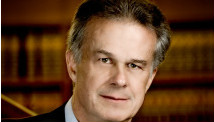NEW ORLEANS (AP) — Count Baltimore Ravens defensive end Arthur Jones among those NFL players who want the league and the union to finally agree on a way to do blood testing for human growth hormone.
"I hope guys wouldn't be cheating. That's why you do all this extra work and extra training. Unfortunately, there are probably a few guys, a handful maybe, that are on it. It's unfortunate. It takes away from the sport," Jones said.
"It would be fair to do blood testing," Jones added. "Hopefully they figure it out."
When Jones and the Ravens face the San Francisco 49ers in the Super Bowl on Sunday, two complete seasons will have come and gone without a single HGH test being administered, even though the league and the NFL Players Association paved the way for it in the 10-year collective bargaining agreement they signed in August 2011.
Since then, the sides have haggled over various elements, primarily the union's insistence that it needs more information about the validity of a test that is used by Olympic sports and Major League Baseball. HGH is a banned performance-enhancing drug that is hard to detect and has been linked to health problems such as diabetes, cardiac dysfunction and arthritis.
"If there are guys using (HGH), there definitely needs to be action taken against it, and it needs to be out of (the sport)," Ravens backup quarterback Tyrod Taylor said. "I'm pretty sure it'll happen eventually."
At least two members of Congress want to make it happen sooner, rather than later.
House Oversight and Government Reform Committee chairman Darrell Issa, a California Republican, and ranking Democrat Elijah Cummings of Maryland wrote NFLPA head DeMaurice Smith this week to chastise the union for standing in the way of HGH testing and to warn that they might ask players to testify on Capitol Hill.
Smith is scheduled to hold his annual pre-Super Bowl news conference Thursday.
"We have cooperated and been helpful to the committee on all of their requests," NFLPA spokesman George Atallah said. "If this is something they feel strongly about, we will be happy to help them facilitate it."
Several players from the Super Bowl teams said they would be willing to talk to Congress about the issue, if asked.
"I have nothing to hide. I can't speak for anyone else in football, but I would have no problem going," said Kenny Wiggins, a 6-foot-6, 314-pound offensive lineman on San Francisco's practice squad.
But Wiggins added: "There's a lot more problems in the U.S. they should be worried about than HGH in the NFL."
That sentiment was echoed by former New York Giants offensive lineman Shaun O'Hara, who now works for the NFL Network.
"Do I think there is an HGH problem in the NFL? I don't think there is. Are there guys who are using it? I'm sure there are. But is it something Congress needs to worry about? No. We have enough educated people on both sides that can fully handle this. And if they can't, then they should be fired," said O'Hara, an NFLPA representative as a player. "I include the union in that, and I include the NFL. There is no reason we would need someone to help us facilitate this process."
Issa and Cummings apparently disagree.
In December, their committee held a hearing at which medical experts testified that the current HGH test is reliable and that the union's request for a new study is unnecessary. Neither the league nor union was invited to participate in that hearing; at the time, Issa and Cummings said they expected additional hearings.
"We are disappointed with the NFLPA's remarkable recalcitrance, which has prevented meaningful progress on this issue," they wrote in their recent letter to Smith. "We intend to take a more active role to determine whether the position you have taken — that HGH is not a serious concern and that the test for HGH is unreliable — is consistent with the beliefs of rank and file NFL players."
Atallah questioned that premise.
"To us, there is no distinction between players and the union. ... The reason we had HGH in our CBA is precisely because our players wanted us to start testing for it," Atallah said. "We are not being recalcitrant for recalcitrance sake. We are merely following the direction of our player leadership."
Wiggins and other players said no one can know for sure how much HGH use there is in the league until there is testing — but that it's important for the union's concerns about the test to be answered.
"The union decides what is best for the players," said Ravens nose tackle Ma'ake Kemoeatu, who said he would be willing to go to Capitol Hill.
"I feel like some guys are on HGH," said 49ers offensive lineman Anthony Davis, who would rather not speak to Congress. "I personally don't care if there is testing. It's something they have to live with, knowing they cheated, and if they get (outplayed) while they're on it, it's a hit on their pride."
___
Follow Howard Fendrich on Twitter at http://twitter.com/HowardFendrich

